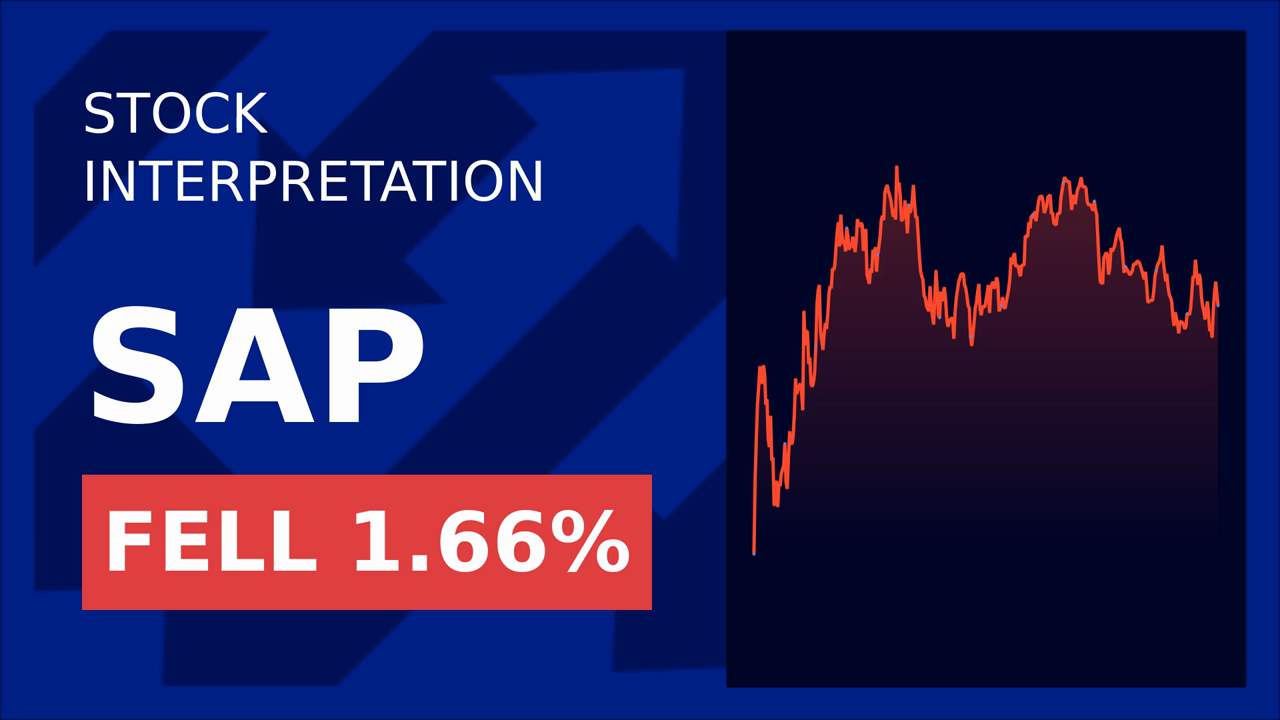SAP Shares Surge on Q1 Earnings Beat: A Cloud-Driven Rebound Amid Global Uncertainties
SAP’s stock soared 8.5% on April 25, 2025, after the enterprise software giant reported stronger-than-expected earnings, fueled by cloud revenue growth and disciplined cost management. This marked the largest single-day gain in over five years, underscoring investor optimism about SAP’s strategic shift toward cloud-centric offerings. However, the path ahead remains fraught with macroeconomic and geopolitical risks. Below, we dissect the key drivers, risks, and implications for investors.
Revenue Performance: Cloud Dominance Masks Software Decline
SAP’s Q1 2025 results highlighted a stark bifurcation in its business segments. While cloud revenue surged 27% to €4.99 billion—driven by a 34% jump in Cloud ERP Suite sales—traditional software licenses and services revenue declined 10% and 1%, respectively. This reflects SAP’s deliberate pivot away from on-premise software toward cloud-based solutions, a strategy that is paying off in terms of revenue mix but has yet to fully offset legacy revenue erosion.
Total revenue of €9.01 billion fell modestly short of consensus estimates (€9.06 billion), but the miss was overshadowed by the 60% year-over-year jump in non-IFRS operating profit to €2.5 billion, far exceeding forecasts. This profit surge was fueled by cost-cutting measures, including a €5 billion share repurchase program (with €3.1 billion already deployed).

Market Reaction and Analyst Sentiment
The stock’s 8.5% surge on earnings day was fueled by two key factors:
1. Cloud Backlog Growth: SAP reported a 28% rise in cloud backlog to €18.2 billion, signaling robust demand for its AI-driven offerings like the Business Data Cloud.
2. Reaffirmed Full-Year Targets: SAP maintained its 2025 cloud revenue guidance of €21.6–21.9 billion, despite macro headwinds.
Analysts remain cautiously optimistic. The average one-year price target of $312.86 (24% upside from the then-current $252.40) suggests confidence in SAP’s cloud transition. However, GuruFocus’s GF Value analysis highlighted a potential 30% downside to $175.91, reflecting concerns about valuation and margin pressures.
Key Drivers and Risks
Strengths:
- Cloud Leadership: SAP maintained top rankings in Gartner and IDC’s enterprise software reports, with wins in automotive and public sectors.
- Cost Discipline: The €3 billion restructuring program (with 10,000 jobs under review) has already yielded savings, boosting margins.
- Strategic Innovations: The Business Data Cloud—a semantic layer unifying SAP and non-SAP data—positions SAP as a leader in AI-driven analytics.
Risks:
- Geopolitical Tensions: SAP warned that U.S.-China trade disputes could disrupt supply chains and compress margins.
- Decelerating Cloud Growth: While cloud revenue grew 27%, this slowed from Q4’s 30% pace, with delayed deal ramp-ups cited as a drag.
- Profitability Pressures: Though cloud margins improved, sustained macro volatility could test SAP’s ability to maintain cost discipline.
Management Outlook: Caution Meets Confidence
CEO Christian Klein emphasized that SAP’s pipeline remains “solid” despite geopolitical uncertainties. CFO Dominik Asam projected a Q2 acceleration in cloud revenue as delayed deals ramp up, though he cautioned that backlog growth may moderate in 2025. Both executives reiterated the company’s focus on customer resilience and shareholder returns.
Conclusion: Cloud Strength vs. Macro Weakness
SAP’s Q1 results underscore its cloud-driven transformation, with AI and data integration propelling growth. The €4.99 billion cloud revenue and €18.2 billion backlog are clear positives, supported by strong free cash flow and disciplined cost management. However, risks such as tariffs and trade disruptions loom large.
Investors must weigh SAP’s 24% upside potential (per analyst targets) against GuruFocus’s 30% downside warning. The stock’s post-earnings surge suggests markets are pricing in optimism, but sustained cloud growth and margin resilience will be critical.
For now, SAP’s fundamentals—strong cloud adoption, leadership in enterprise software, and a shareholder-friendly repurchase program—support a hold to cautiously bullish stance. But with geopolitical risks unresolved, investors should monitor SAP’s Q2 results closely for clues on whether the rebound is durable.
Final Note: SAP’s journey from legacy software to cloud leader is far from over. The next quarter will test whether its growth can outpace the storm clouds on the horizon.










